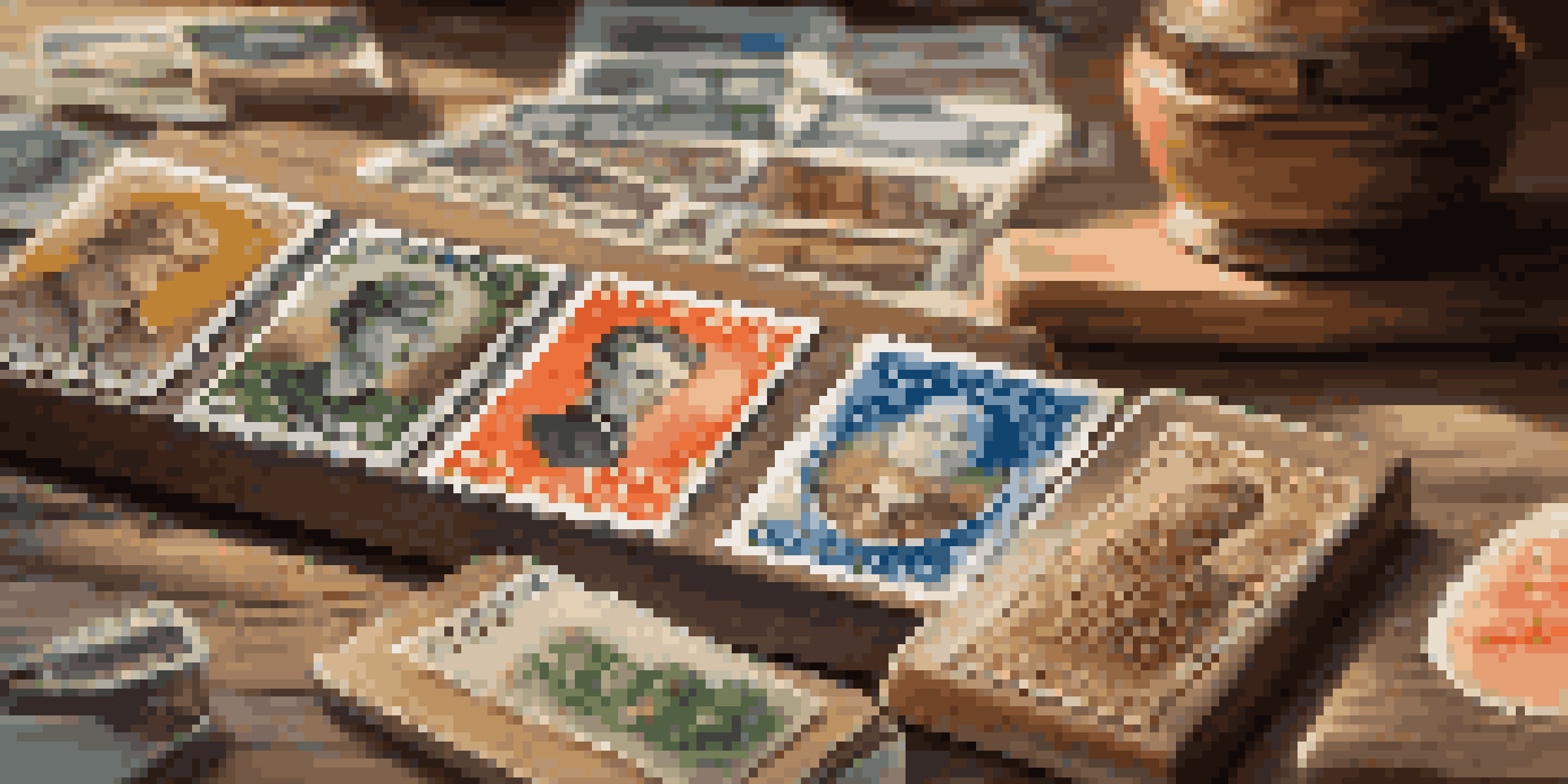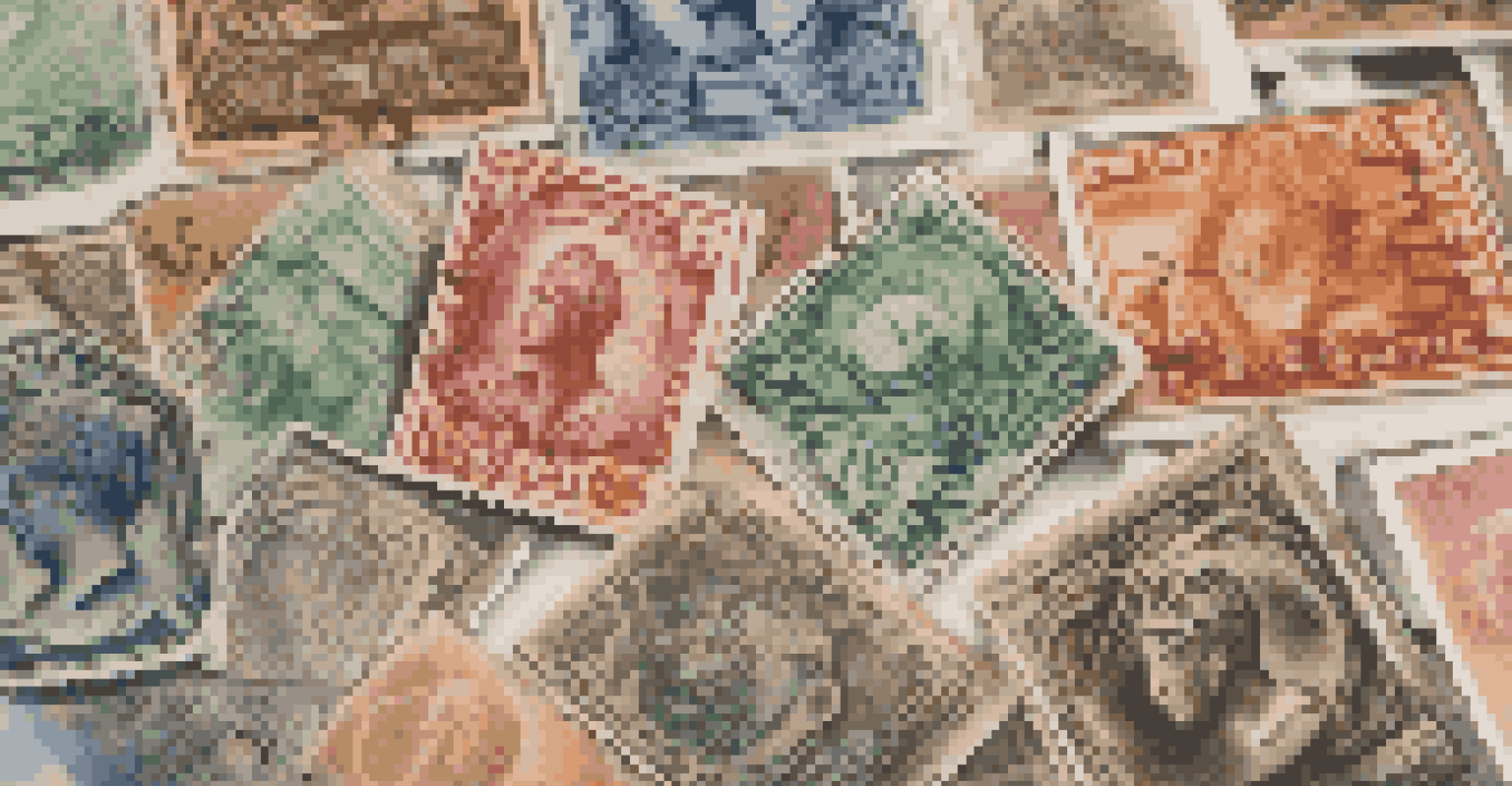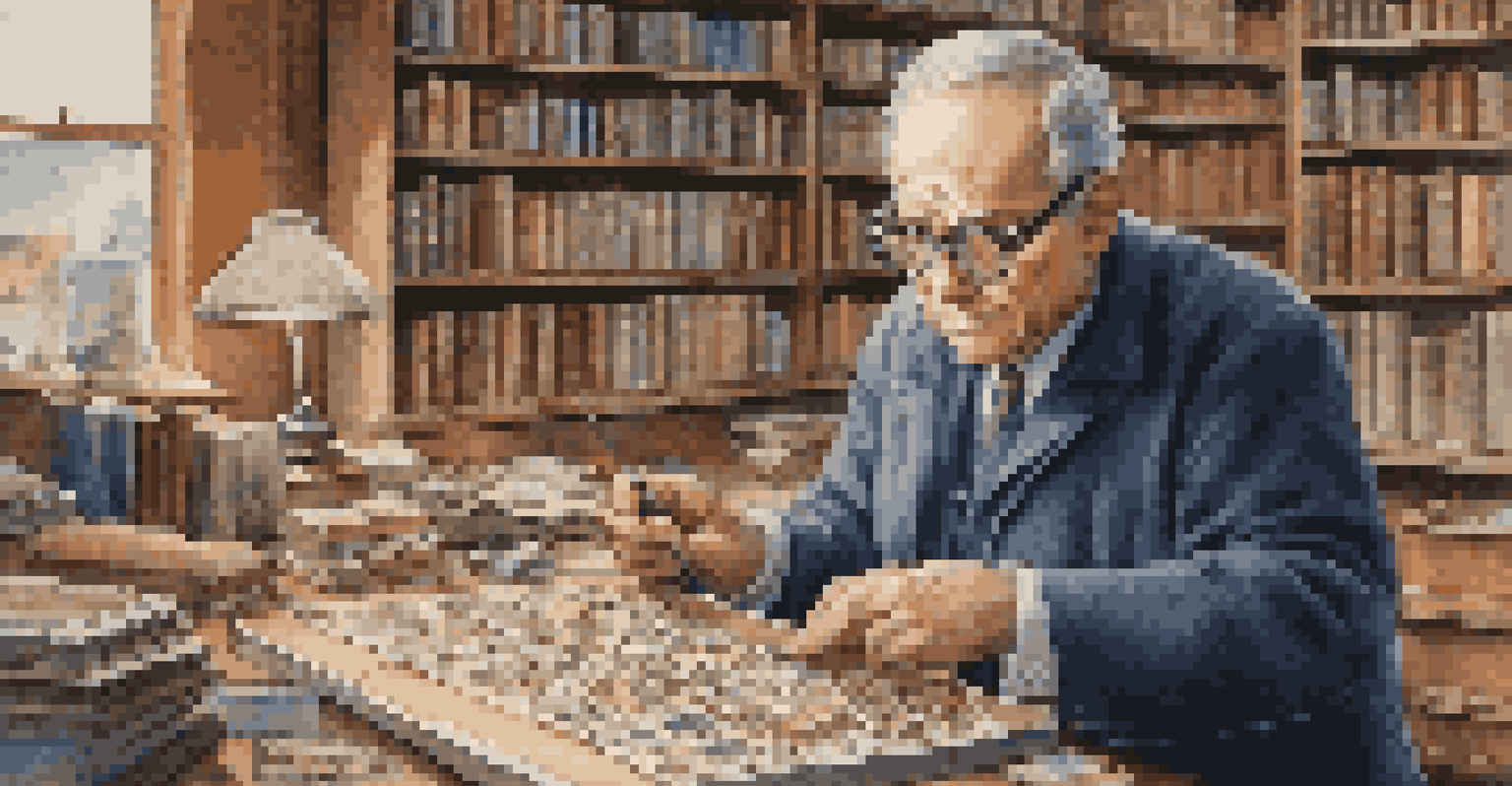Identifying Forged Stamps: Protecting Your Collection

Understanding the Importance of Authentic Stamps
Stamps are more than just pieces of paper; they’re tiny windows into history. Each stamp tells a story, reflecting the culture and time of its creation. This makes authentic stamps highly valued among collectors, which is why the presence of forged stamps can be so damaging.
The more you know about stamps, the more you appreciate their beauty and history.
Collecting stamps can be a rewarding hobby, but it also comes with its challenges. One of the biggest threats is the risk of purchasing forgeries, which can easily slip through the cracks if you're not careful. Understanding the significance of authentic stamps can help you appreciate your collection even more, as well as protect it.
By recognizing the value of genuine stamps, collectors can become more diligent in their quest for authenticity. This understanding serves as the foundation for identifying forged stamps and ensuring that your collection remains pristine and valuable.
Common Types of Forged Stamps to Watch For
Forgeries come in various forms, and knowing the most common types is crucial for collectors. The most prevalent types include photocopied stamps, altered stamps, and even completely fabricated designs. Each type poses unique challenges in terms of identification, making awareness vital.

Photocopied stamps can be deceptively convincing, especially if they are printed on paper that mimics the feel of authentic stamp paper. Altered stamps, on the other hand, often involve minor modifications to genuine stamps, such as changing cancellation marks or altering colors. Understanding these distinctions can help you catch forgeries before they become part of your collection.
Value of Authentic Stamps
Authentic stamps offer a rich historical context and protect the integrity of your collection.
Finally, completely fabricated stamps can sometimes be sold as rare finds, especially on online marketplaces. Being aware of these common types of forgeries will sharpen your eye and keep your collection safe from illegal reproductions.
Visual Clues to Identify Forged Stamps
When it comes to spotting forged stamps, a keen eye for detail can make all the difference. Start by examining the printing technique used on the stamp. Authentic stamps are typically printed using specific methods like intaglio or lithography, which create unique textures and patterns.
A stamp is a small piece of paper that can hold a world of stories.
Next, take a close look at the colors and ink quality. Genuine stamps often have consistent and vibrant colors that are hard to replicate. If a stamp appears faded or has uneven coloring, it could be a sign of forgery.
Lastly, pay attention to the perforations and edges of the stamp. Authentic stamps will have uniform perforation patterns, while forgeries may show irregularities. By honing in on these visual clues, you can greatly improve your chances of identifying forged stamps.
The Role of Expert Appraisals in Authentication
When in doubt, expert appraisals can be invaluable for collectors. Professional appraisers possess specialized knowledge and experience, making them adept at spotting forgery. They can provide insights that may not be apparent to even the most seasoned collector.
Engaging an expert can save you time and money in the long run. Instead of risking your investment on questionable stamps, a professional can help you authenticate your collection, ensuring that every piece is genuine. This added layer of security offers peace of mind.
Identifying Forged Stamps
Recognizing common types and visual clues of forgeries is crucial for collectors to preserve their investments.
Moreover, experts can also provide documentation that may enhance the value of your stamps. Certificates of authenticity can make your collection more appealing to potential buyers, further underscoring the importance of seeking expert advice.
Resources for Learning About Stamp Forgery
Knowledge is power, especially when it comes to identifying forged stamps. There are numerous resources available for collectors to educate themselves about the nuances of stamp forgery. Books, articles, and online forums can provide valuable insights.
Joining stamp-collecting clubs or associations can also be a great way to learn from experienced collectors. Many clubs host workshops or seminars that focus on identifying forgeries, offering hands-on experience in a community setting.
Additionally, online resources like blogs and educational videos can help you stay updated on the latest trends in stamp forgeries. By actively seeking out information, you can enhance your skills and become a more informed collector.
The Importance of Proper Storage and Handling
Proper storage and handling of stamps can help preserve their value and authenticity. Using acid-free materials and protective sleeves can prevent physical damage and deterioration, which can sometimes be mistaken for forgery. Handling your stamps with care is crucial.
Additionally, avoiding exposure to direct sunlight and extreme temperatures will help maintain the integrity of your stamps. A well-preserved collection is less likely to show signs of aging that could raise suspicions about authenticity.
Expert Help is Essential
Engaging professional appraisers can provide valuable insights and documentation to ensure the authenticity of your stamps.
By creating a suitable environment for your stamps, you minimize the risk of damage and ensure that they remain in excellent condition. This proactive approach not only protects your investment but also enhances your overall collecting experience.
Recognizing Red Flags in Stamp Transactions
When purchasing stamps, it’s essential to be aware of red flags that may indicate a forgery. If a deal seems too good to be true, it probably is. Be cautious of sellers offering rare stamps at suspiciously low prices, as this could be a sign of counterfeit items.
Additionally, always ask for clear images and detailed descriptions of the stamps before making a purchase. If a seller hesitates to provide this information or seems evasive, it may be best to walk away. Trust your instincts; they can often guide you in the right direction.

Lastly, be wary of transactions with sellers who lack credibility or reviews. Researching the seller and looking for testimonials can help ensure that you’re making a safe investment. Recognizing these red flags will empower you to make informed decisions in your stamp-collecting journey.